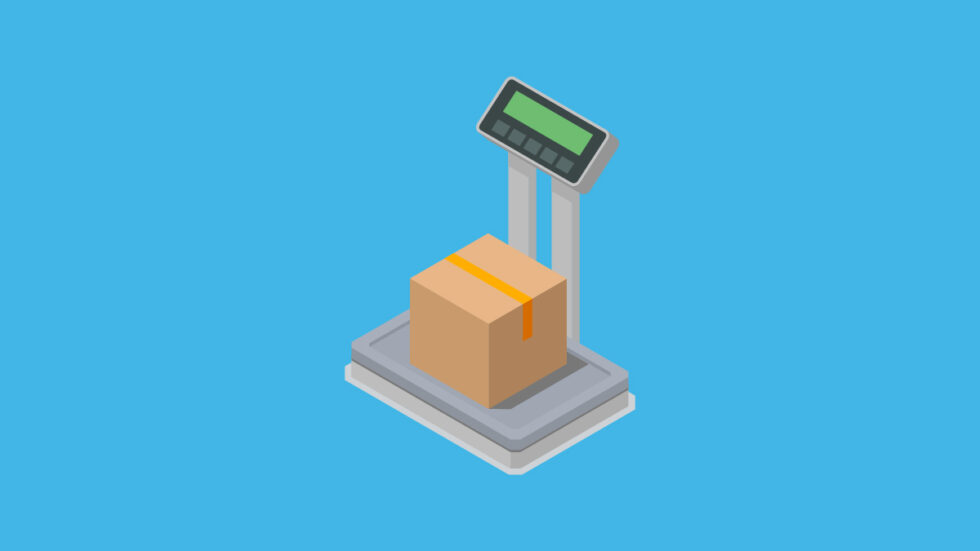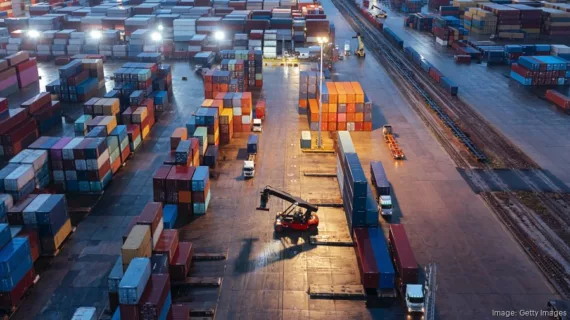Newsroom
For Immediate Release

Defining Density and How It Impacts LTL Freight
The density of a shipment is an important component of shipping Less-than-Truckload (LTL) freight. Not only are there specific density-based pricing programs available with various carriers, but it’s also a main driver in receiving lower (or higher) customer-specific pricing (CSP) with a carrier. Carriers want to maximize the space used on their trucks, and a higher-density product better utilizes the cube of the trailer and is more cost effective for a carrier to move, resulting in more favorable pricing for the customer.
Products with a higher density also receive a lower shipping classification from The National Motor Freight Traffic Association (NMFTA). Lower freight class equals lower cost to ship; for example, cotton candy has a class of 300, whereas bricks have a class of 55.

How To Calculate Density:
The density of a shipment can be calculated by following these steps:
- Multiply the Height x Width x Depth of your shipment to find the total cubic inches.
- Divide your total cubic inches (from step 1) by 1,728 to find the total cubic feet.
- Divide the weight of your shipment by the total cubic feet. This results in your pounds per cubic foot (PCF) OR density.
For example: 2 skids each with the following dimensions 44 inches x 48 inches x 48 inches, one weighing 1500 pounds and the other weighing 300 pounds have the following densities:
| 1500 pounds | 300 pounds |
|---|---|
| 1: 44 x 48 x 48 = 101,376 | 1: 44 x 48 x 48 = 101,376 |
| 2: 101,376 / 1728 = 58.66 | 2: 101,376 / 1728 = 58.66 |
| 3: 1500 / 58.66 = 25.57 | 3: 300 / 58.66 = 5.11 |
How Can DLX Help?
LTL freight can be complicated, but it doesn’t have to be. At Dynamic Logistix, we have a dedicated team with extensive experience in LTL and are here to answer any of your LTL questions, as well as help you better understand your freight and provide solutions. Our XTMS technology also simplifies the calculation of density to ensure you always have accurate information for your shipments.
If you want to learn more about freight density and LTL shipping, explore our XTMS platform or book a demo to find out how our platform can help you lower your shipping costs and save hundreds of hours of manual work through data automation.

Red Sea Crisis
The Red Sea crisis has garnered significant attention in recent months as a result of the challenges it has placed on the global supply chain. The Red Sea, which provides access to the southern entrance to the Suez Canal, is one of the most important and densely packed shipping channels in the world. Roughly 19,000 vessels travel between the Indian Ocean and Mediterranean Sea each year and the Suez Canal reduces shipping distance between Asia and Europe by nearly half. About 12% of global trade, opens new tab passes through the Red Sea, including 30% of global container traffic and $1 trillion worth of goods each year, reported by Reuters.

3 Keys to an integrated, efficient, and reliable refrigerated shipping network
Refrigerated shipping, or reefer shipping, is a sophisticated network of technology, infrastructure, and expertise dedicated to preserving the quality and safety of temperature-sensitive cargo. The transportation of goods in specially designed containers or cargo holds equipped with temperature-control mechanisms. These systems maintain specific temperature ranges, typically between -20°C to +30°C (-4°F to 86°F), depending on the cargo’s requirements.

End-to-end visibility changes the game for shippers, carriers
Companies across the supply chain have been laser-focused on improving their visibility options over the past several years. While most companies understand that visibility paves the way for increased efficiency and better coordination throughout the lifecycle of a shipment, many leaders in the space do not yet have a solid understanding of partial versus complete visibility.

Update on the State of Freight: April 2024
Insight into technology and labor trends, current rates and a new tax plan.

April 2024 Logistix Loop
From fragile ceramic mugs to heavy weight machinery, product shipments come in various shapes, sizes and weights. While not all freight requires the same handling for safe delivery, there are a few best practices shippers can implement to set up carriers for success when transporting their goods.




